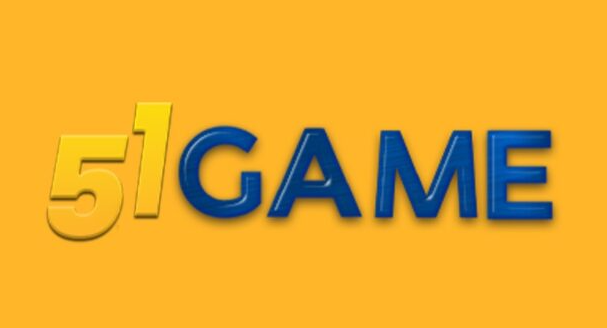Cristiano Ronaldo’s career is often celebrated for goals, trophies, and record-breaking performances. Yet, an equally compelling part of his journey lies in his resilience—how he responded to adversity, particularly long-term injuries. Each Cristiano Ronaldo injury comeback tells a story of discipline, determination, and reinvention. These moments reveal that greatness in football is not only about winning finals but also about returning stronger after setbacks.
To fully appreciate his enduring legacy, we must explore the psychological battles, physical challenges, and triumphant returns that shaped his career.
The Psychological Weight of Long-Term Injuries
Before any physical recovery begins, athletes face a mental battle. The uncertainty of whether they will return to their best form can weigh heavily, even for elite players. For Ronaldo, the psychological aspect of injuries was just as significant as the physical.
During these difficult times, Ronaldo built mental strategies that helped him confront fear, doubt, and frustration. This foundation would later allow him to endure long periods on the sidelines without losing focus or motivation.
Building Mental Strength Through Adversity
Ronaldo’s setbacks forged his mental resilience. Instead of surrendering to frustration, he used downtime to visualize his recovery, set new goals, and remain engaged with his team. This proactive mindset meant that every injury became an opportunity for growth rather than decline.
This mental toughness naturally connected to his physical recovery methods, where his discipline became the deciding factor in his successful returns.
Early Injury Setbacks at Manchester United
Ronaldo’s years at Manchester United were crucial in shaping his character. He faced early injury challenges that interrupted his development, but they also taught him the patience and perseverance required for long-term success.
From ankle issues to muscular strains, Ronaldo’s body was tested in the physical Premier League environment. These injuries were frustrating for a young player desperate to prove himself, yet they forced him to focus on fitness, conditioning, and adaptability.
These experiences laid the groundwork for the even bigger comebacks he would need later in his career.
Modern Recovery Techniques and Ronaldo’s Discipline
Ronaldo’s comebacks were not just the result of medical treatment but of a holistic approach to recovery. His meticulous discipline in training, diet, and rest made him a model for modern athletes.
Instead of seeing recovery as downtime, Ronaldo viewed it as another competition—one where discipline could determine the outcome.
Nutrition and Fitness as Secret Weapons
Ronaldo’s nutrition and fitness regimes became legendary. From tailored diets to customized recovery sessions, he embraced science to accelerate healing and prevent future setbacks. His attention to detail extended to hydration, sleep cycles, and even cryotherapy sessions.
These choices were not luxuries but necessities that allowed him to return stronger. They also became a foundation for his longevity, keeping him competitive well into his late 30s.
Iconic Comeback Moments with Real Madrid
At Real Madrid, the world witnessed some of Ronaldo’s most famous comebacks. The pressure was immense, and every return from injury became a test of his ability to remain the team’s talisman.
He not only returned from setbacks but often did so with performances that silenced doubts and reasserted his dominance on the biggest stages.
Return from Knee Injury to Lead in Champions League
One defining comeback came after knee troubles. Many wondered whether the explosive Ronaldo could remain decisive. Yet, in the Champions League, he reminded the world why he was indispensable. His goals, energy, and presence proved that even after injury, he could lead his team to glory.
This resilience mirrored the same qualities he would later bring to his national team, Portugal.
Comebacks in International Football with Portugal
For Portugal, Ronaldo’s importance has always been more than just goals. His leadership and presence inspire the entire squad. His injury comebacks with the national team became stories of determination that lifted both teammates and fans.
Each time he returned, he proved that his influence went beyond the physical—his mentality was contagious.
Euro 2016 and the Road to Recovery
Euro 2016 is perhaps the greatest example. Injured in the final against France, Ronaldo had to leave the pitch in tears. Yet, instead of fading into the background, he became a vocal leader on the sidelines, encouraging his team to victory.
This episode showed how he adapted even when physically limited. His contribution was not measured in goals but in leadership, proving that his resilience extended far beyond physical recovery.
Longevity and Reinvention in Later Years
As Ronaldo aged, injuries became more frequent, but so did his adaptations. He reinvented himself from a speedy winger into a clinical forward, minimizing strain while maximizing impact.
His ability to reinvent his game ensured that every Cristiano Ronaldo injury comeback was not only a return but also an evolution. He shifted from relying on explosive dribbles to mastering positioning, timing, and finishing.
Words like “revival,” “resurgence,” and “reinvention” define this phase of his career—synonyms that illustrate the depth of his adaptability.
Legacy of Cristiano Ronaldo’s Injury Comebacks
The legacy of Ronaldo’s comebacks is inseparable from his overall story. They prove that greatness is not about never falling but about rising each time stronger.
His injury recoveries taught fans and fellow athletes alike the value of discipline, resilience, and self-belief. They also elevated his status as not just a footballer but as a global role model for overcoming adversity.
These comeback stories are as iconic as his trophies, forming an essential part of his legend.
Cultural Influence of Ronaldo’s Resilience
Ronaldo’s comebacks extend beyond the pitch. They inspire athletes in other sports, motivate everyday people facing challenges, and shape cultural conversations about resilience.
Modern fans don’t just watch football—they engage with it across platforms. Ronaldo’s comeback stories spread through social media, fan forums, and interactive communities. In fact, many football fans who follow inspirational stories like these often connect through digital platforms such as ยูฟ่าเบท168 vip, where sports culture, discussions, and entertainment blend seamlessly.
Moreover, the way fans consume football now involves more than highlights. They explore strategies, analysis, and interactive experiences. For example, enthusiasts often explore content on วิธีแทงบอลในเว็บ, engaging with both tactical understanding and community-driven participation.
These examples highlight how Ronaldo’s comebacks influence not just admiration but also broader fan experiences in the digital era.
Conclusion: Lessons from Ronaldo’s Return to Greatness
Cristiano Ronaldo’s career has always been about more than numbers. His comebacks after long-term injuries show the mindset of a champion who refuses to be defined by setbacks. Each return reinforced his reputation, inspired millions, and reshaped what fans expect from elite athletes.
Every Cristiano Ronaldo injury comeback teaches that resilience, discipline, and reinvention are as vital as talent. For modern football culture, his story remains a reminder that true greatness lies not in avoiding failure but in the relentless pursuit of recovery and excellence.
Ronaldo’s legacy is not just about records—it is about resilience. His inspirational journey continues to remind the world that even the greatest can stumble, but the truly legendary always rise again.

